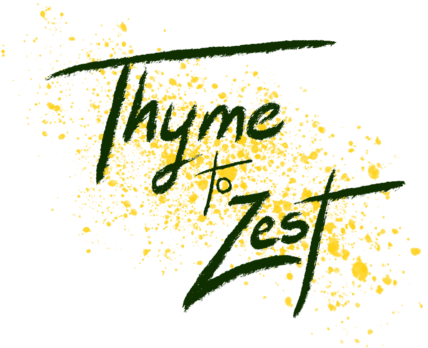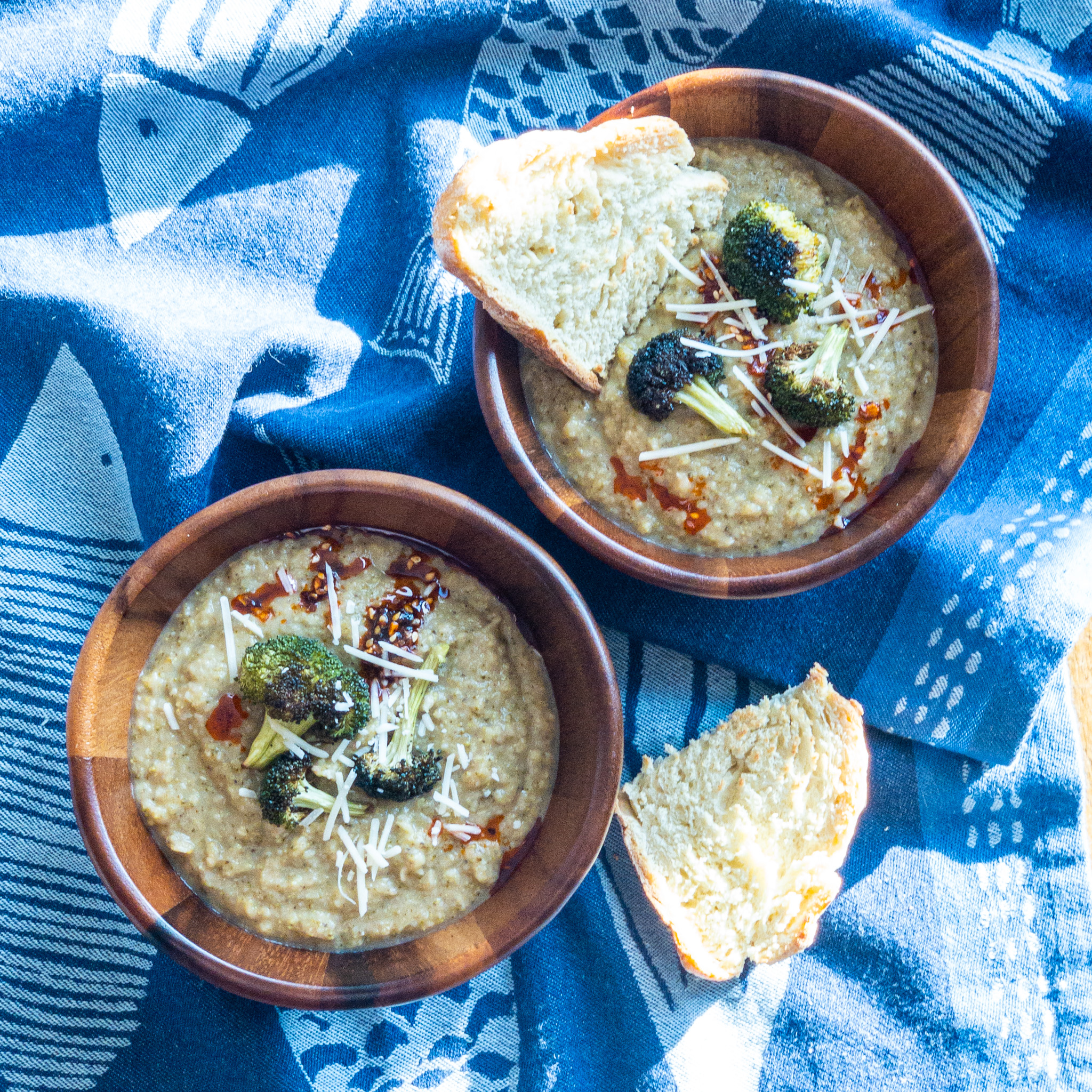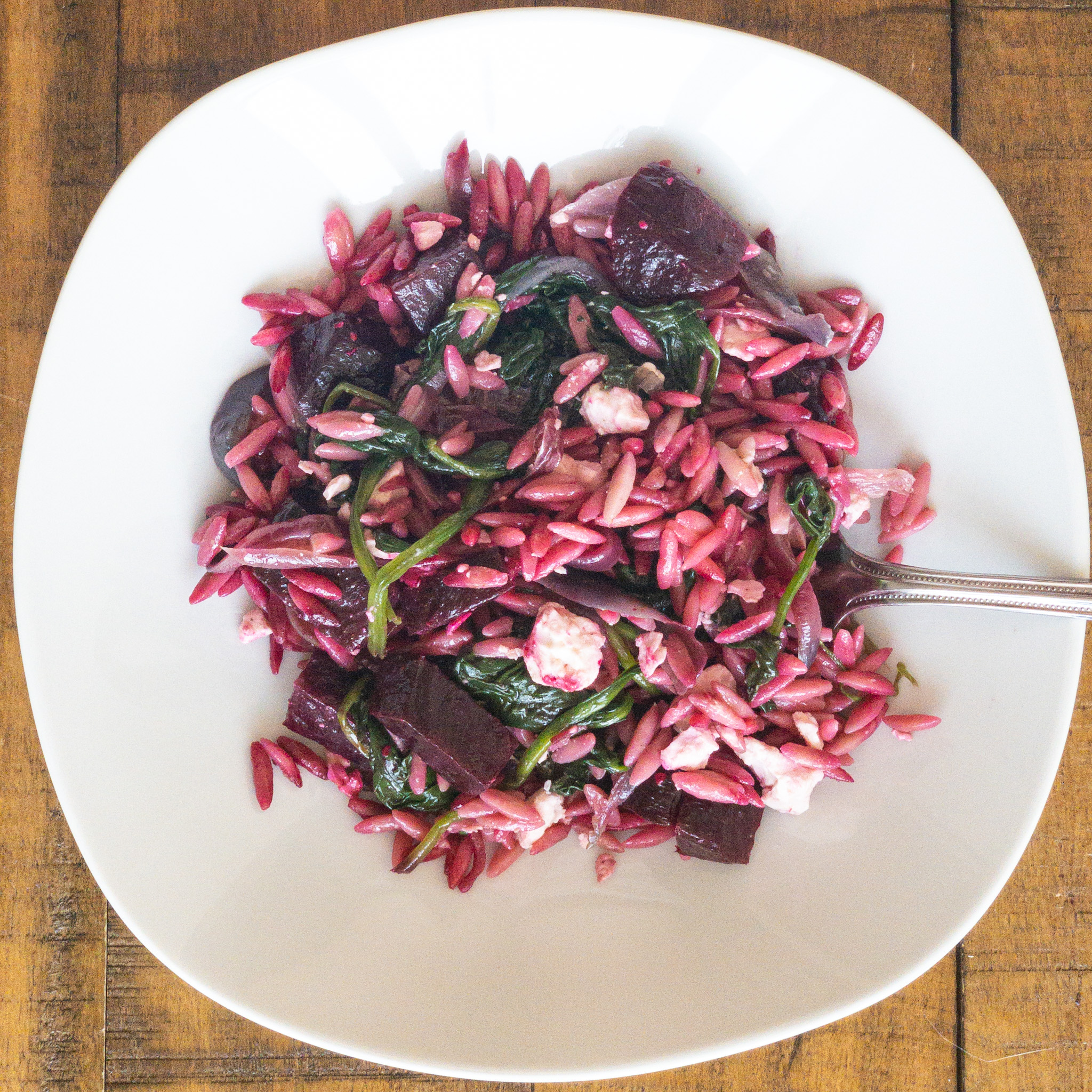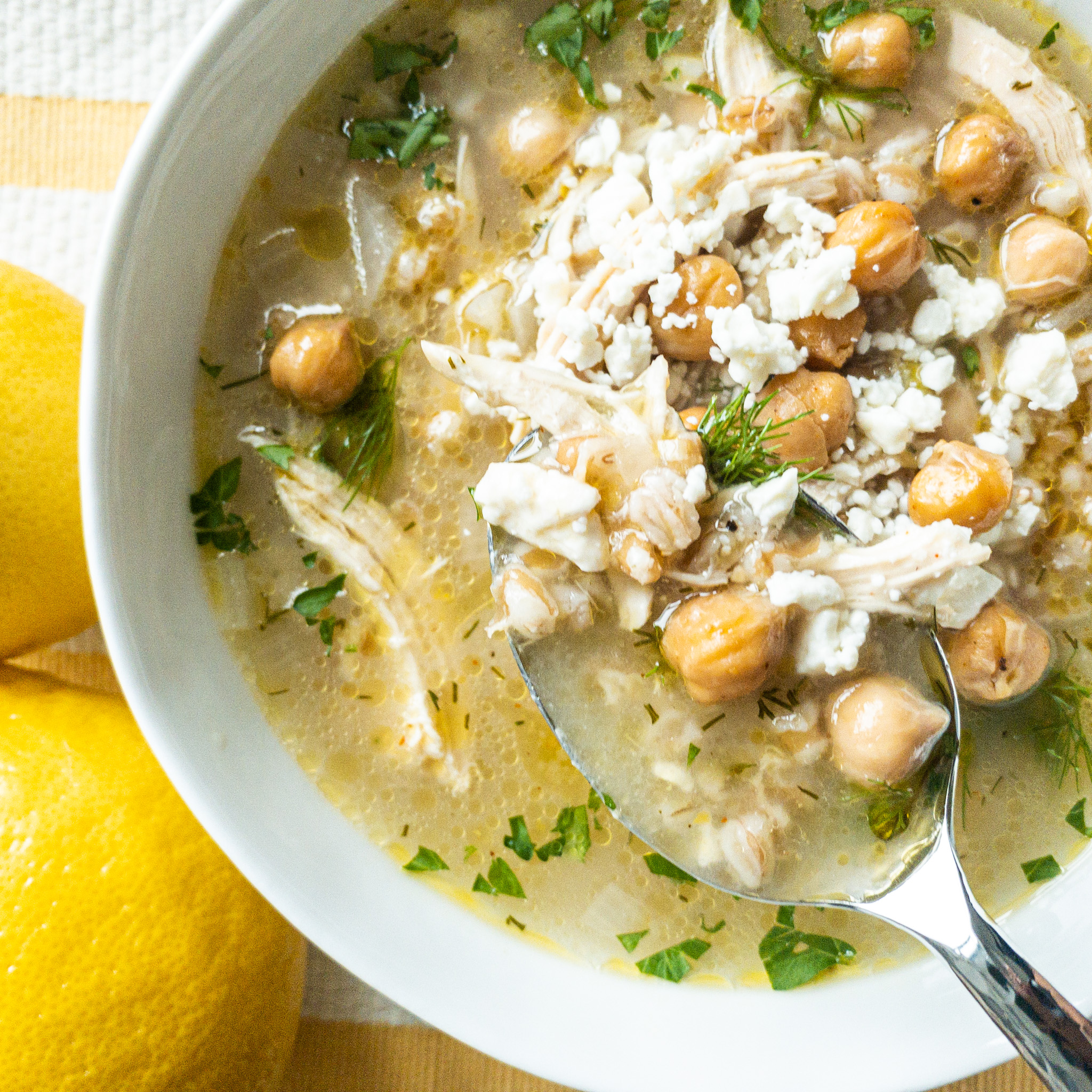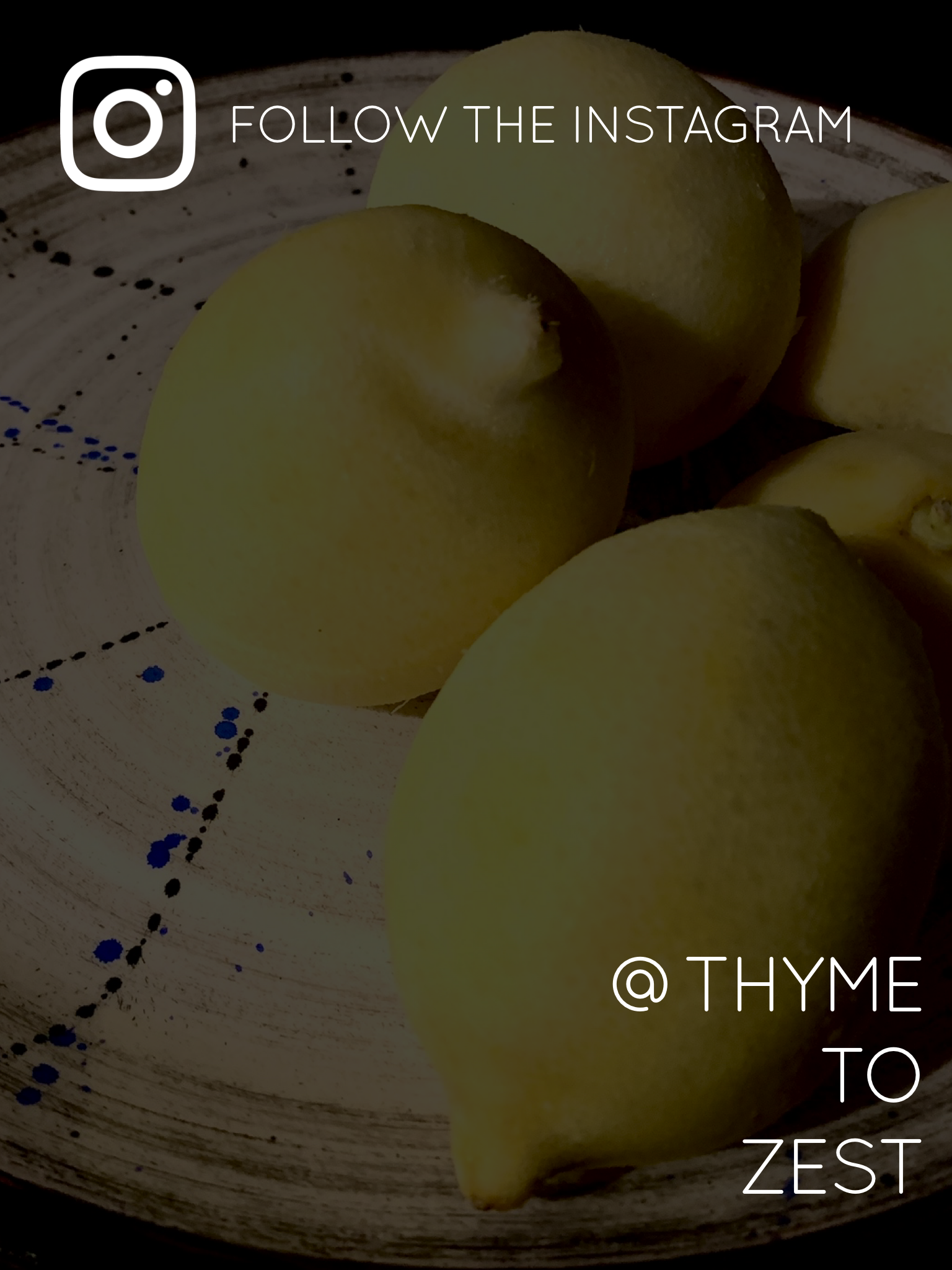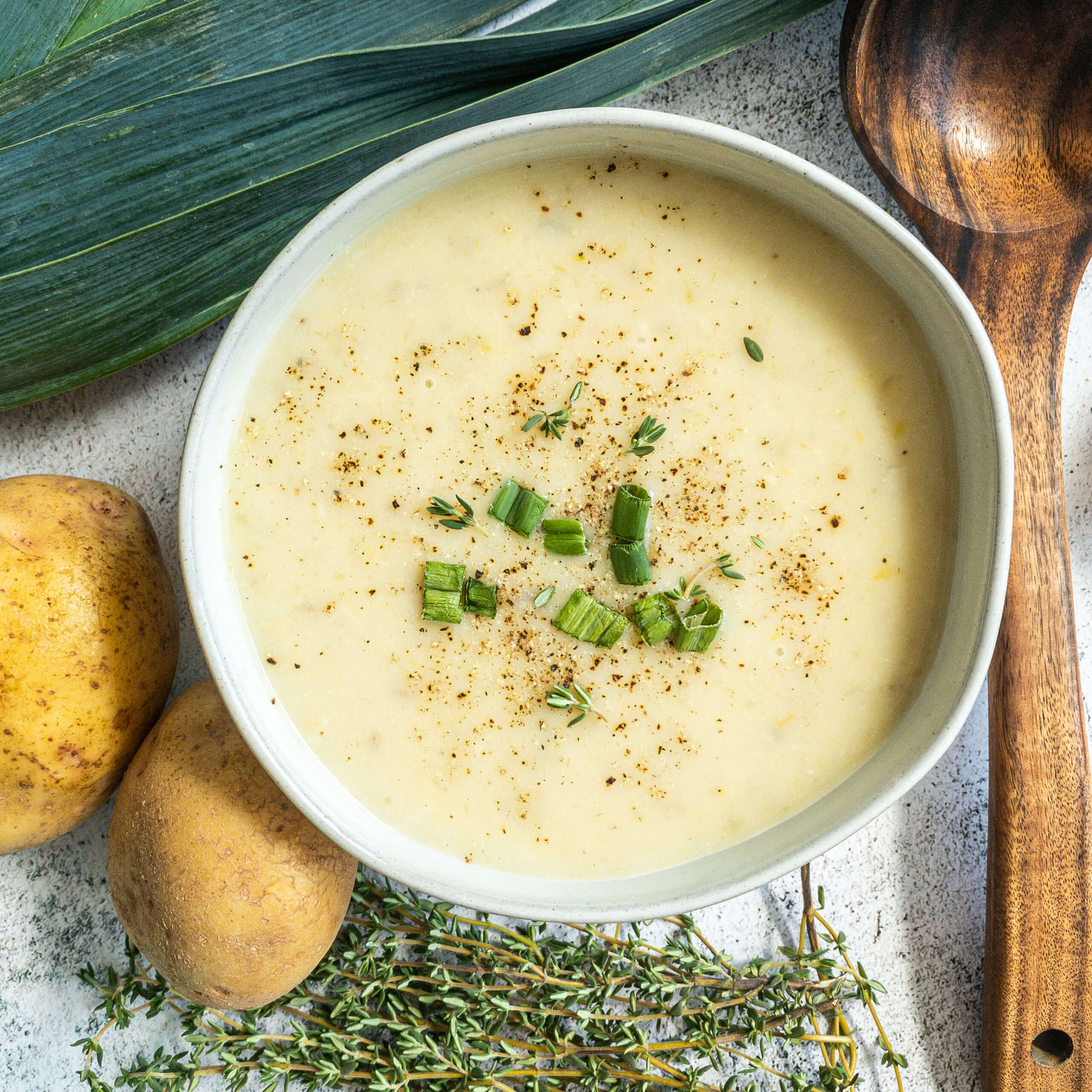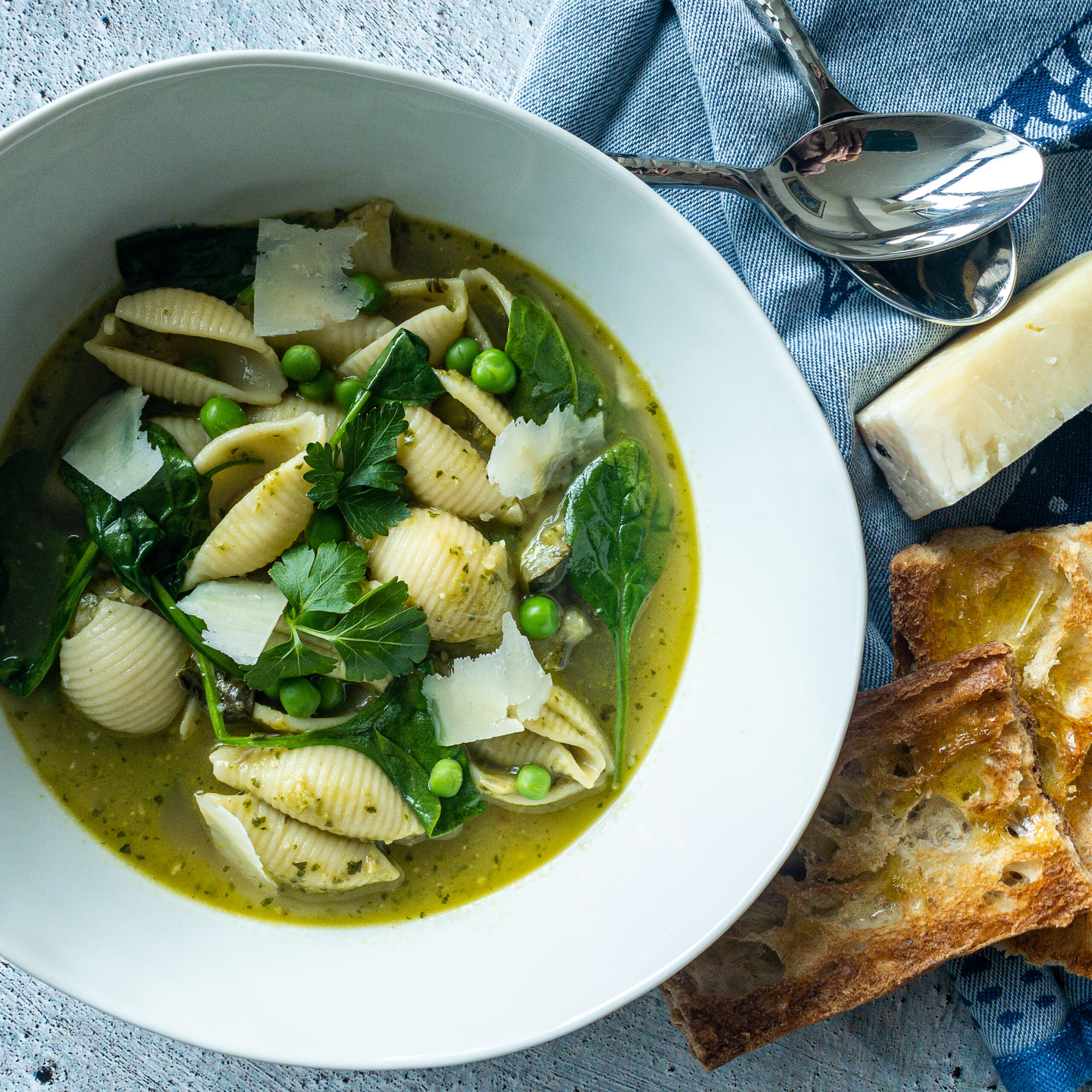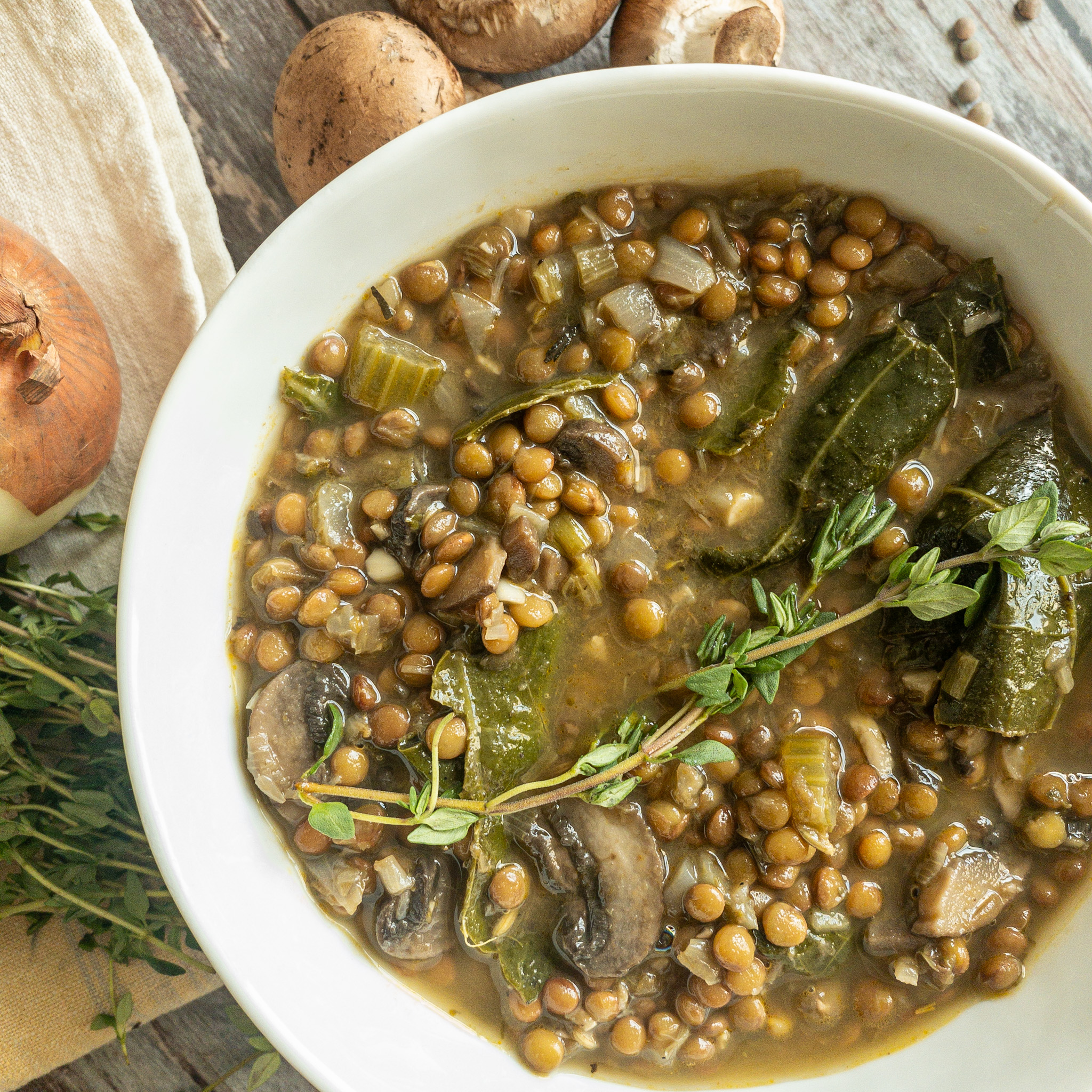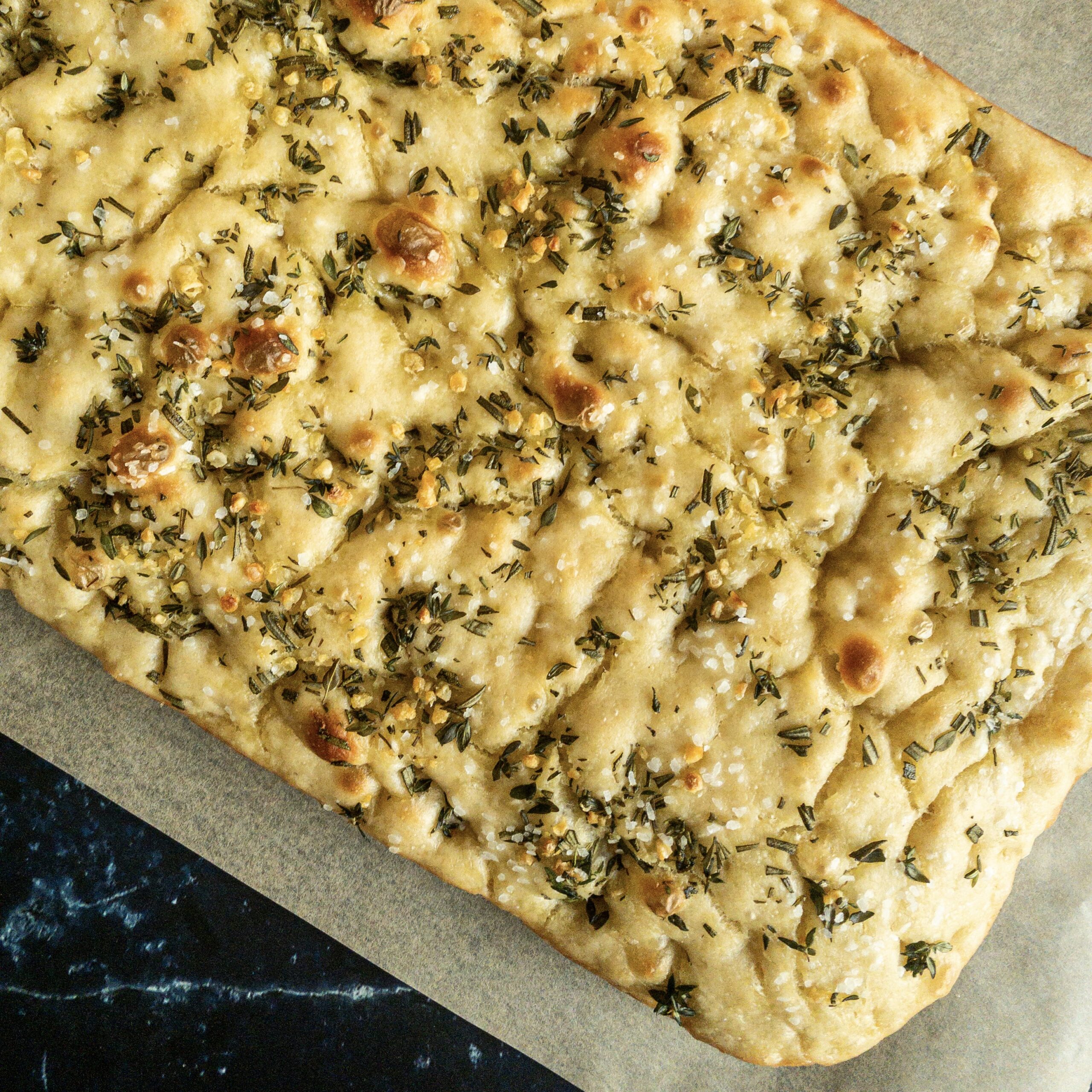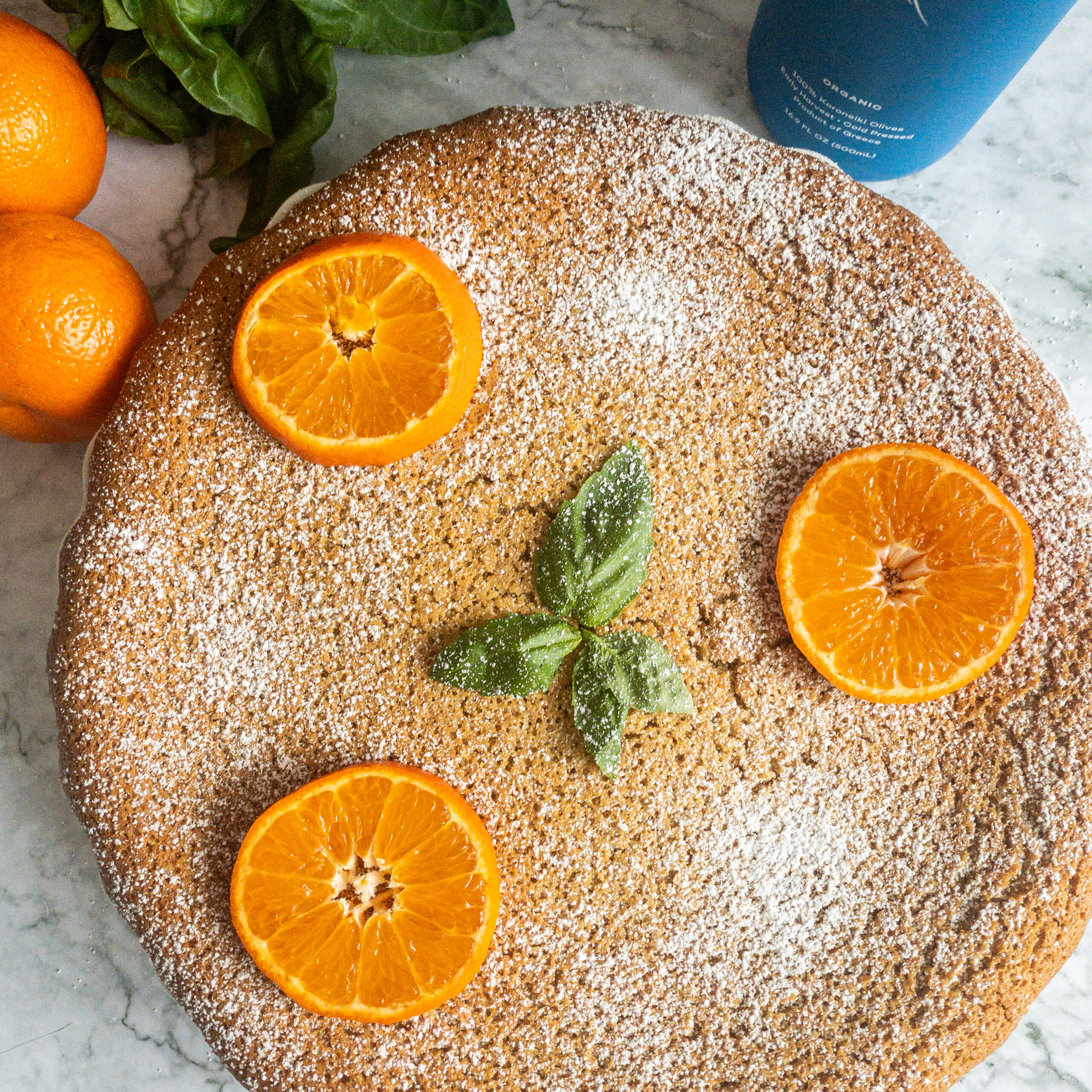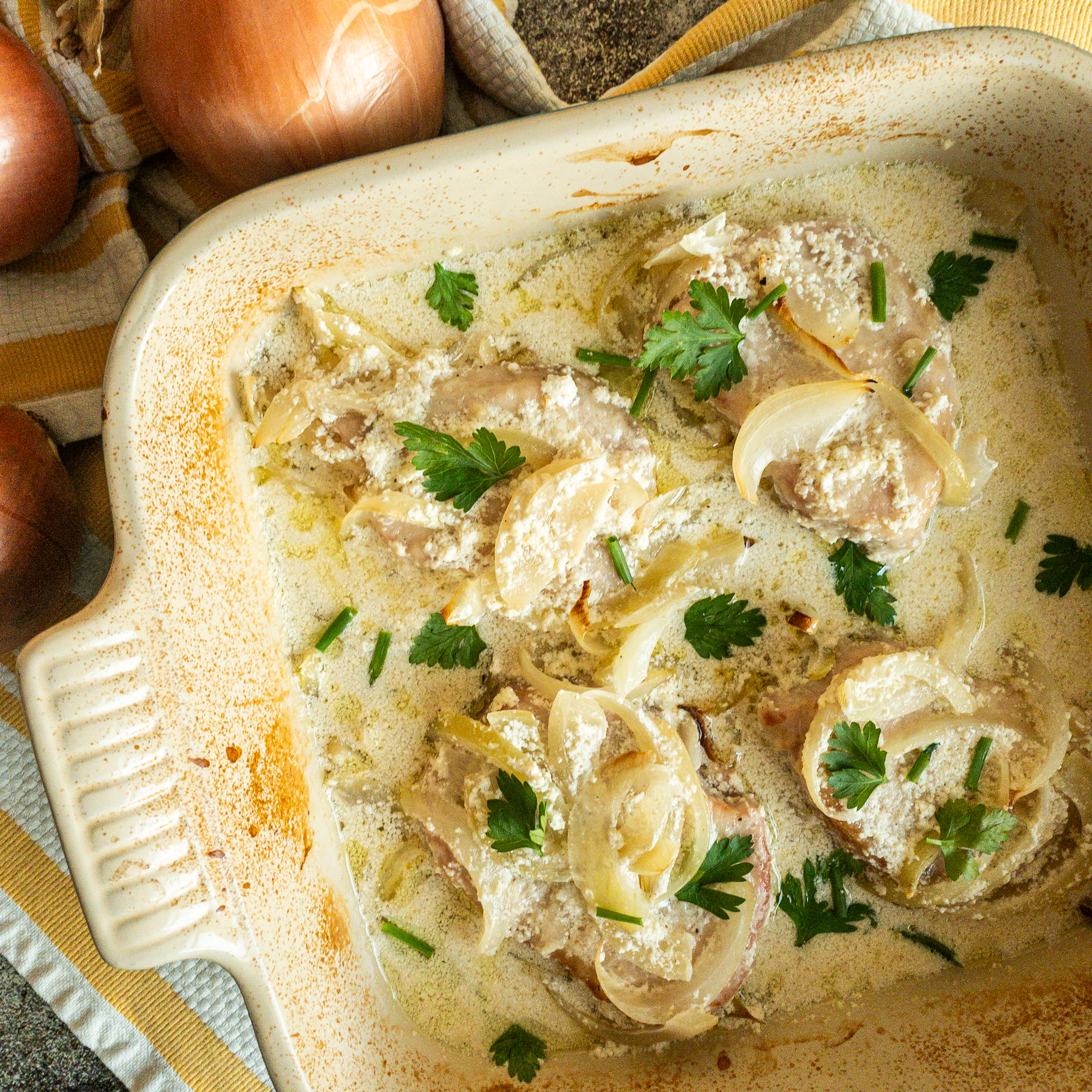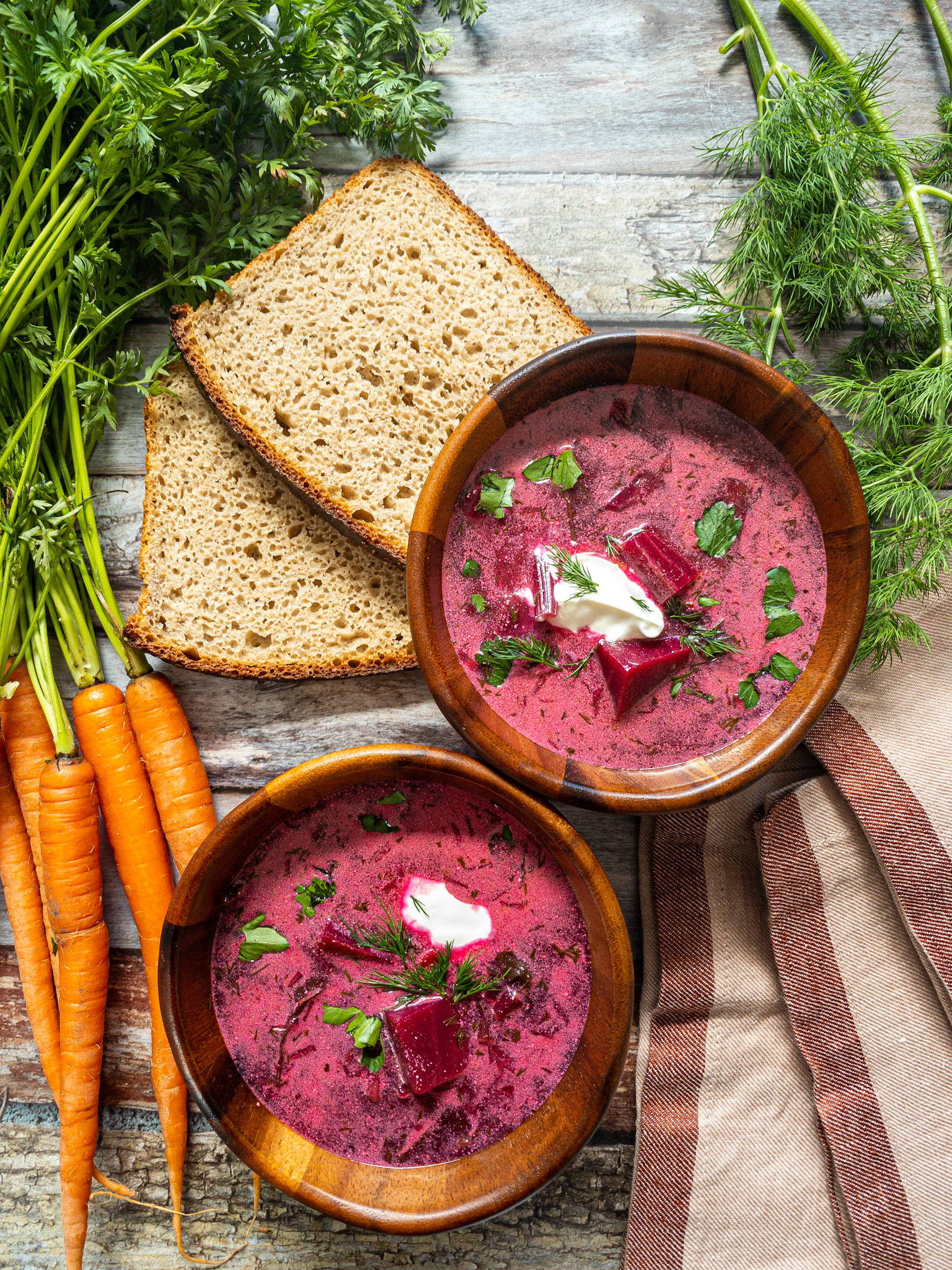
This Ukrainian borscht recipe is something that’s very near and dear to my heart. While there are many different ways to make borscht, this version most closely resembles the one my grandmother, or Bunia, as we affectionately call her, would make when I was growing up.
I have fond memories of playing at her condo when I was a child, while the sweet and savory scents of simmering beets and cooked onion wafted from the kitchen. Now, when I cook borscht (or any recipe of hers for that matter!), I’m instantly transported back to that time and reminded of my Ukrainian roots.
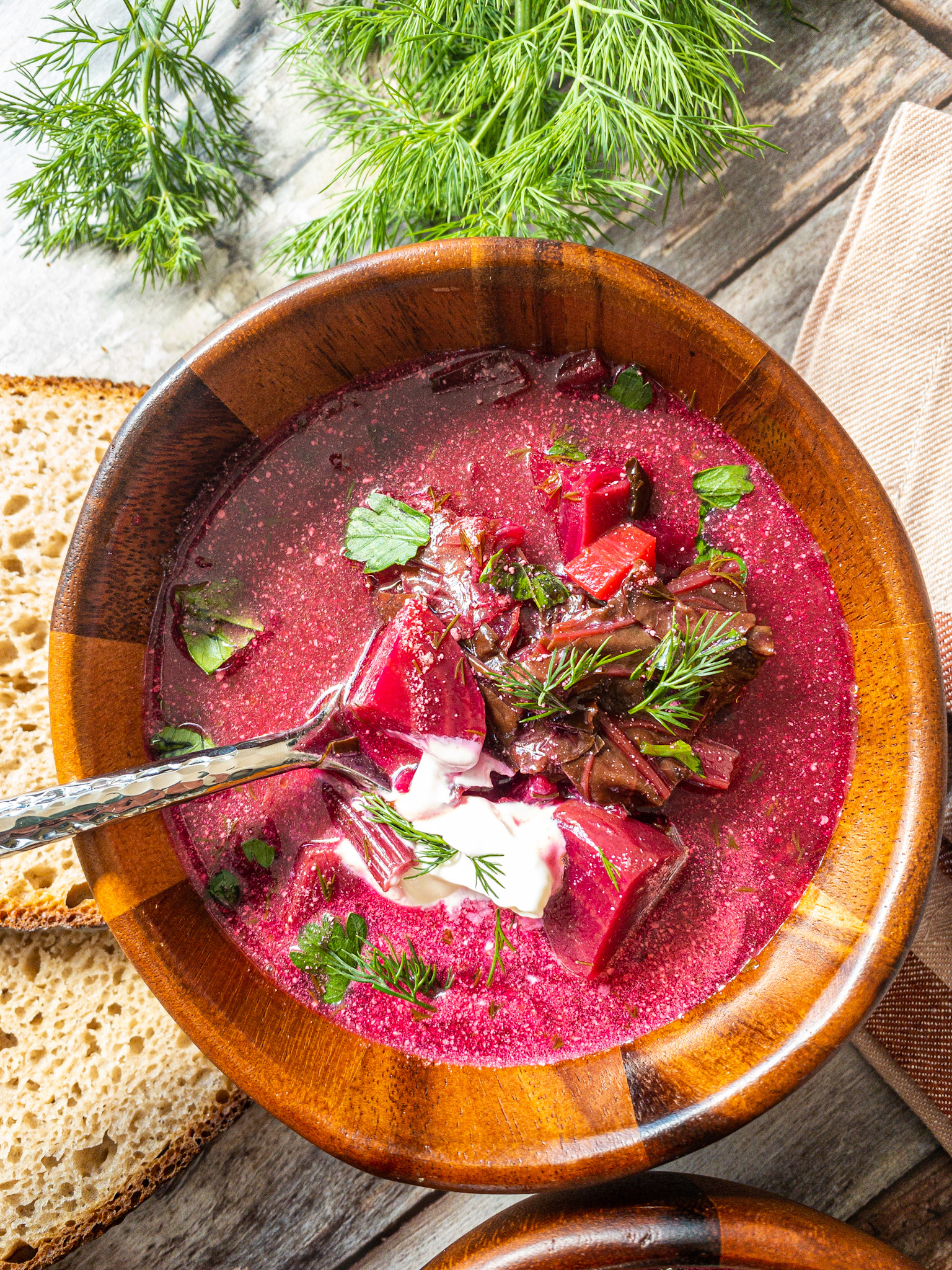
a brief story
As some of you may know, I’m half Ukrainian and come from a household when the Ukrainian culture was very prevalent in my youth. My grandparents on my mother’s side fled Ukraine during the Russian invasion in World War II, and brought with them immense pride and devotion for the country they were forced to leave.
My mother and her siblings grew up speaking Ukrainian, participating in cultural organizations, and upholding many Ukrainian customs and holiday traditions that were then passed on to us. My sister and I went to Ukrainian school as kids, I went to Ukrainian dance camps, and now, I cook Ukrainian foods.
There are many things I love about my culture, but as an enthusiastic foodie, I’ve really loved becoming more invested in Ukrainian cooking and now being able to share it with others.
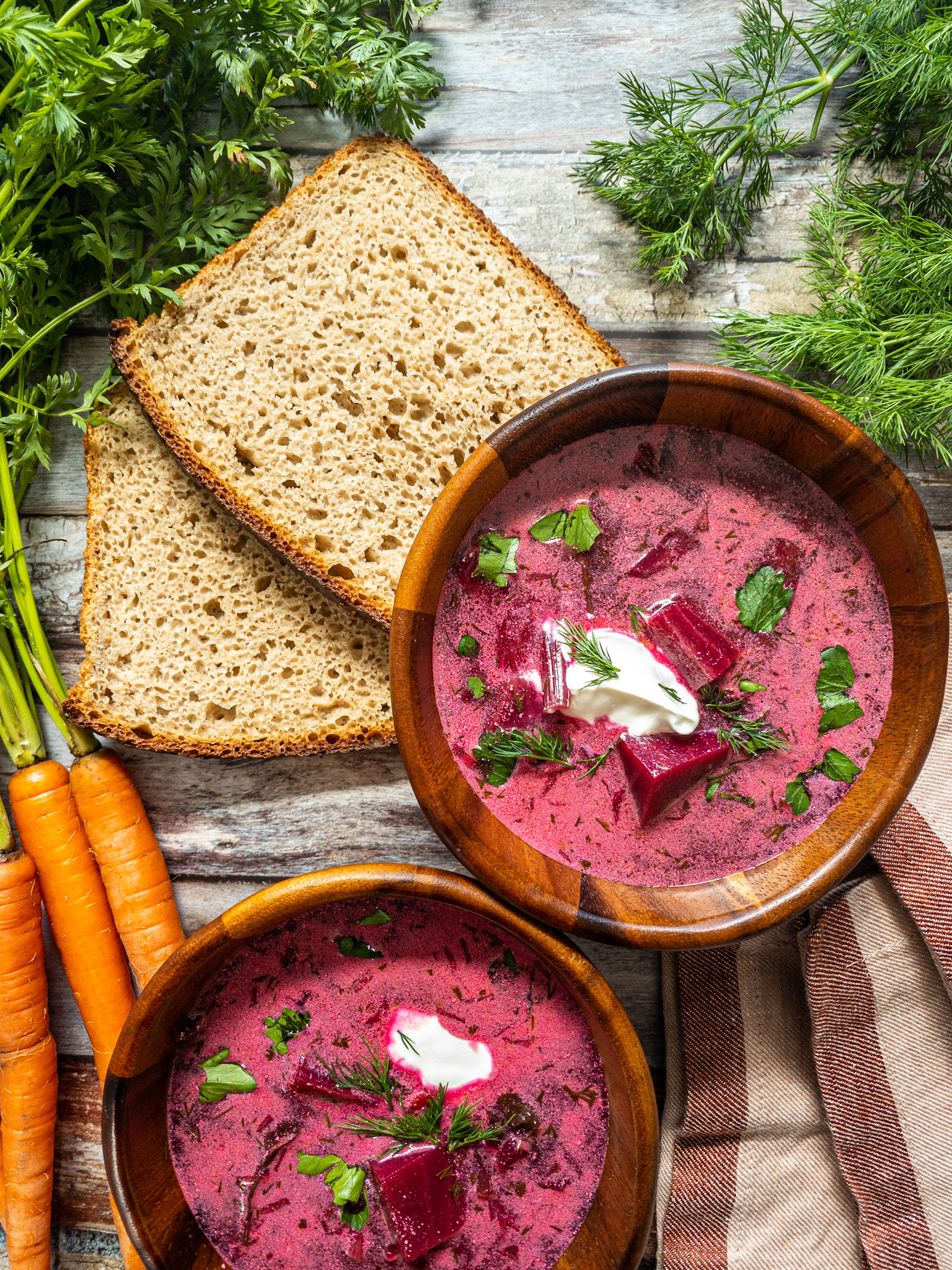
time for the cooking!
Now that we got some of the sentimental stuff out of the way, let’s talk borscht! Borscht is a primarily beet soup that can be made a variety of different ways and served either hot or cold. It’s super nourishing, healthy, delicious, and almost always topped with a heap of fresh dill.
Although working with beets can sometimes be messy and time consuming, the overall process of making borscht is very simple. Like many soups, it begins with a mirepoix base of chopped carrot, celery, and onion.
The beets can either be diced or shredded, but for this recipe I prefer them diced in bite-sized chunks. While they simmer, they release a ton of juice and flavor into the water, creating the signature ruby red color of borscht.
Now, this is personal preference, but I like to reserve the beet greens and simmer them along with the cabbage. I really love the beet greens in my borscht. I think they have such a unique flavor and add a little bit of crunch to the soup. Simmering the greens together also creates a mild veggie broth that you can use later to dilute the beet liquid if it’s too potent. You can always use some boxed veggie broth as well for added flavor.
After everything has been cooked and simmered, you’re basically going to combine all the veggies is the pot with the beet juice. Add a little lemon, a touch of salt, and lots of fresh dill and parsley.
Then, – and this part is completely optional – you can add some sour cream to finish it off. Don’t add the sour cream directly to the pot of hot borscht, but instead, temper it by filling a small bowl with some borscht and whisking in the sour cream to warm it before adding to the full soup. And then you’re done! You might want to season with salt and pepper, add more herbs, or pair it with some brown bread and butter.
Enjoy! Or, as you would say in Ukrainian, Smachnoho!
⟶ the recipe
Ukrainian vegetable borscht
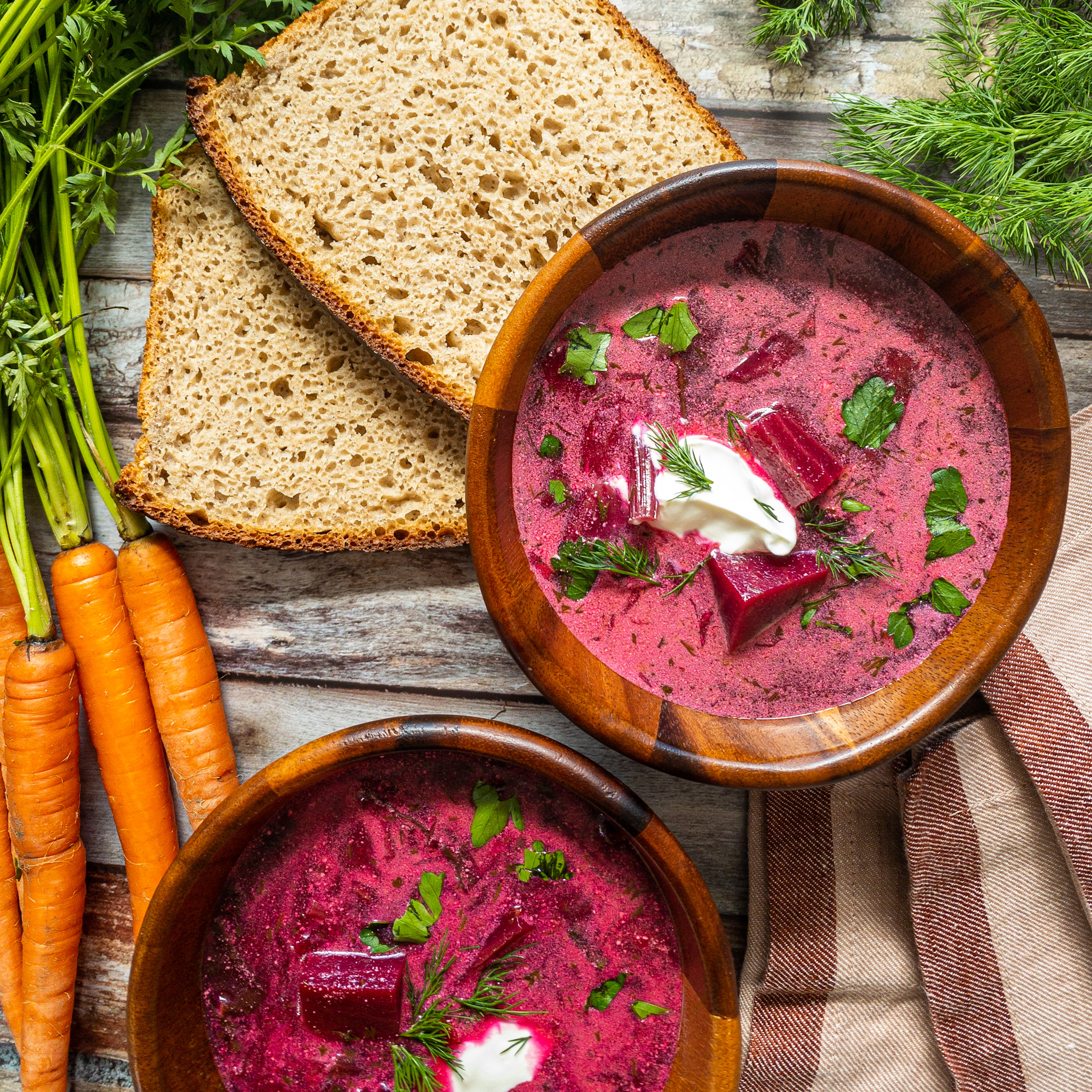
ingredients
9 small beets, peeled and quartered (reserving the beet greens)
¼ of a cabbage head, chopped
3 carrots, peeled and chopped
2 celery stalks, diced
1-2 small onions, chopped
½ lemon, juiced
1 teaspoon salt
¼ cup sour cream
3-4 sprigs of parsley
Handful of fresh dill
Freshly ground black pepper
Prep time
30 minutes
Cook time
~2 hours
Total time
2-3 hours
8 servings
instructions
Fill a large pot with water, and add beets so they’re fully submerged. Cover and simmer for 1-2 hours or until beets are fork-tender. While beets are simmering, chop approximately half of the beet tops and the cabbage, discarding any core and hard ends of leaves.
Simmer beet tops and cabbage for about 15-20 minutes in a separate pot from the beets. Strain vegetables into a medium bowl but set vegetable broth aside for later.
In a large skillet with a drizzle of oil, sauté carrots, celery, and onions until veggies are soft. Remove from heat and set aside.
Once beets are soft, add the cabbage and celery. Then, add in the carrots, celery, and onions, stirring everything together. Dilute borscht with the vegetable broth if desired. Add the lemon juice and salt. Remove borscht from heat, and add fresh dill and parsley.
Spoon sour cream into a bowl, and once at room temperature, slowly add some borscht to avoid curdling. When warm and well-combined, add sour cream mixture to pot. Season with black pepper and additional salt to taste.
⟶ recipe notes
- I know working with beets can sometimes be intimidating, because they can really create a mess with their staining, but as long as you prepare your workspace ahead of time, you’ll no longer have any issue with them. While the stains will wash off your hands with some scrubbing, you can always wear disposable gloves while handling beets. I’ll also place a sheet or plastic wrap or wax paper below my cutting board so they don’t stain my counter
⟶ modifications
- The great thing about borscht is there are so many different ways you can modify! In this vegetarian style borscht, many recipe will include diced tomatoes. I didn’t include them and wasn’t missing them, but you can certainly add
- You can skip the sour cream to make this a dairy-free recipe or if you want to avoid the creaminess. If you DO like it creamy, you can also stir in a splash of heavy cream at the end
- While borscht can make a great vegetarian soup, it’s also delicious and very commonly made with meat as well. Most borschts are made with stewed beef, but you can really use whatever meat you prefer. You can also add a bit of chicken or beef broth instead of the veggie if you’d prefer
⟶ make it ahead
- The beets can take awhile to soften on the stove, but you can really do the step of simmering beets at any point and reserve the cooked beets and liquid until you’re ready to put together the full borscht. I’ll sometimes cook the beets when I’m getting ready in the morning, remove the beet chunks from the liquid and reserve until I’m ready for dinner later in the day
- Borscht will stay good for about a week if you store it in a tightly sealed jar in the fridge. Borscht is also very freezable and can be reheated up to 6 months after cooking it
